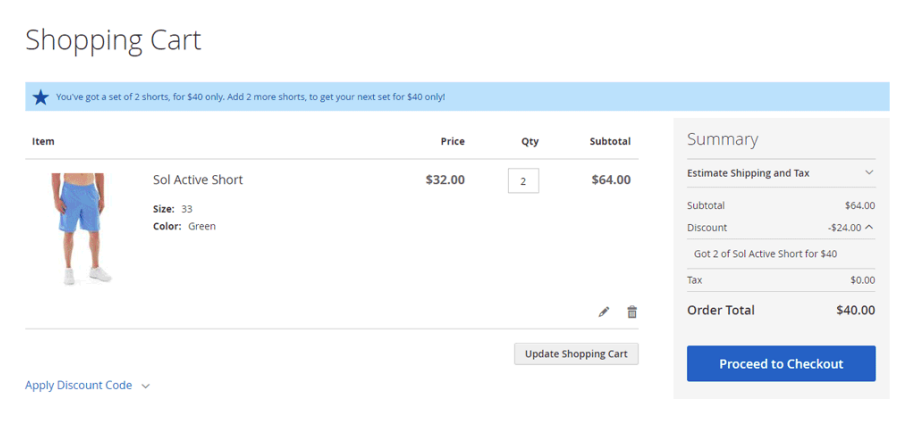Category Tier: Get Each Group of N items for …
This promotion applies a discount or a fixed price on a certain quantity of products. That is, every X quantity of products that match a condition, gets discounted.
The category tier is basically a compact version of the bundle discount, that is, it is the bundle discount with only one group of items.
Promo examples:
- Buy three bags with a 10% disocunt
- Buy 5 t-shirts for $100
- On every 10 bottles, get a $10 discount
Configuration
In the actions list, we have the "Category Tier: Get Each Group of N items for …" action type -
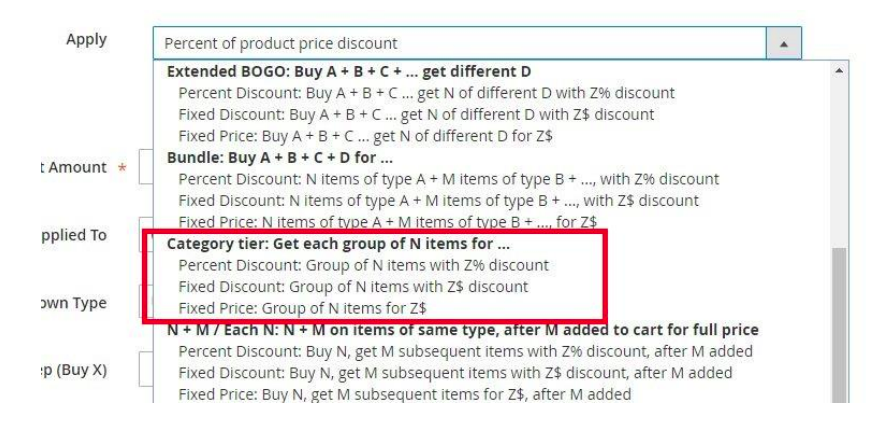
Once selected, the following fields will show up -
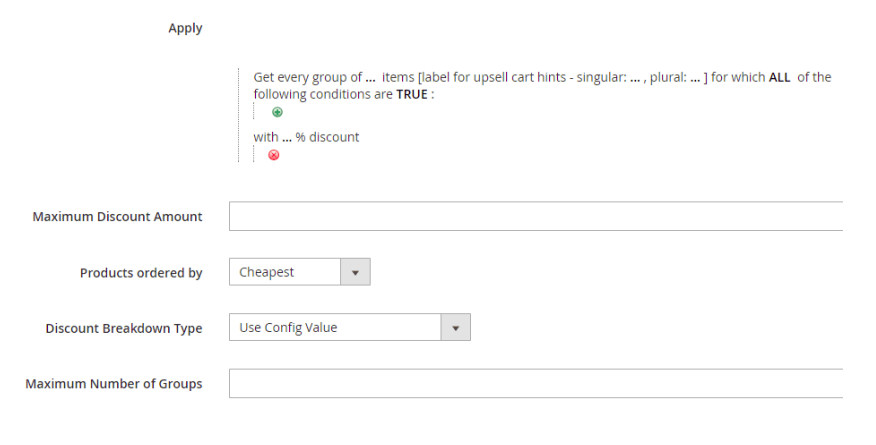
Fields explanation
- Get every group of … items – the number of items in the group for discount to be applied.
- Get every group of … items label for cart hints – singular / plural – the name that will show up in the cart hints, representing the items of the discounted group.
- Items for which ALL of the following conditions are TRUE – the condition that defines the items of the group
- With … % discount – the discount percent which the customer will get for the group of items
- Maximum Discount Amount – maximum discount amount that customer can get in his cart using this promotion
- Products ordered by (cheapest / most expensive) – the items order by which the promotion discount will be applied
- Maximum number of groups – the maximum number of groups that the discount will be applied on.
Category Tier – Percent Discount
Example
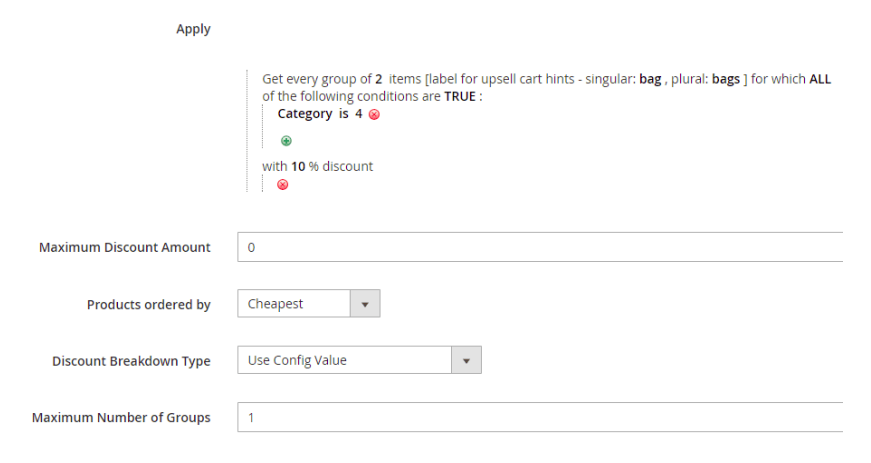
The rule in this example is – “Get 10% discount on buying 2 bags”. This discount can be applied once per order, because the “Maximum Number of Groups” is 1.
Note: In our example, bag is any product that belongs to category 4.
Cart examples for this rule:
- Customer has 1 bag (10$), 1 bag (15$) in cart. The discount amount is 2.5$.
- Customer has 1 bag (10$), 2 bags (20$ each), 2 bags (30$ each) in cart. The discount amount is 3$. (Since the “Maximum Number of Groups” is 1 and the “Products ordered by” is “Cheapest” – the rule is only applied on the 2 first cheapest bags).
Upsell cart hints example for this rule:
Customer has 1 bag in cart. The upsell cart hint is “Add one more bag, to get a set of 2 bags with 10% discount!” –
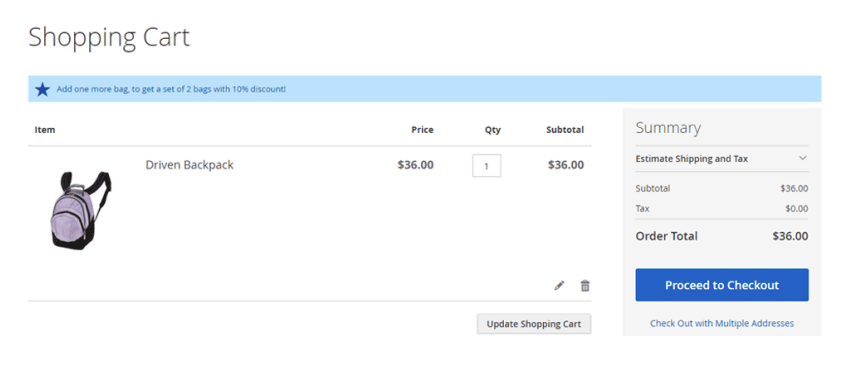
Category Tier – Fixed Discount
Example
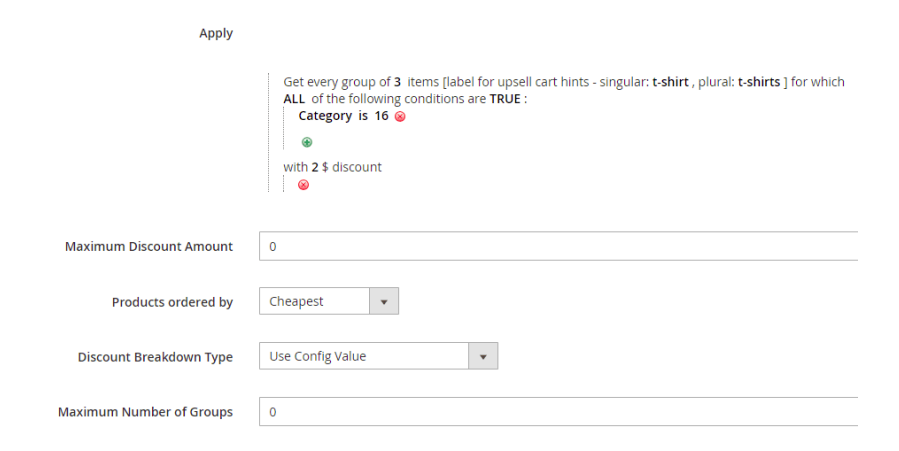
The rule in this example is – “Get 2$ discount on buying 3 T-shirts”.
Note: In our example, T-shirt is any product that belongs to category 16.
Cart examples for this rule:
- Customer has 2 T-shirts (10$ each), 2 T-shirts (15$ each) in cart. The discount amount is 2$.
- Customer has 2 T-shirts (10$ each), 2 t-shirts (15$ each), 1 T-shirt (18$) and 1 T-shirt (20$) in cart. The discount amount is 4$. (There are 2 groups of 3 Tshirts)
Upsell cart hints example for this rule:
- Customer has 1 t-shirt in cart. The upsell cart hint is “Add 2 more t-shirts, to get a set of 3 t-shirts with $2 discount!”
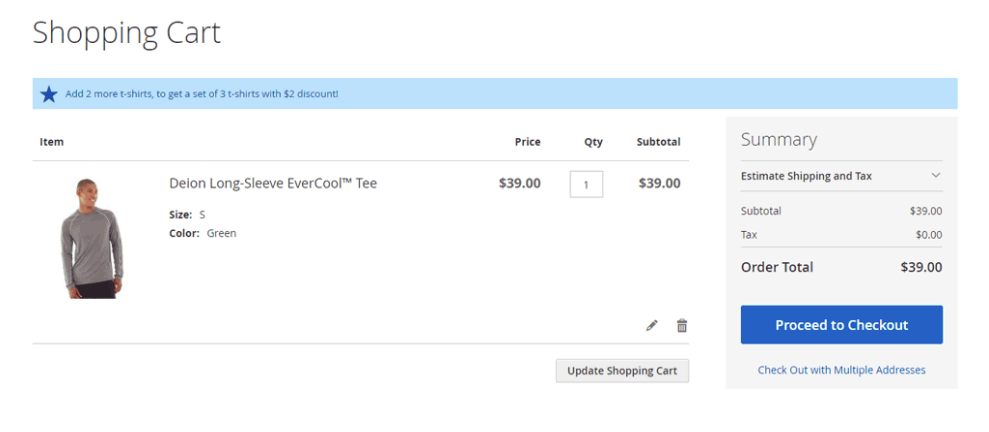
Category Tier – Fixed Price
Example
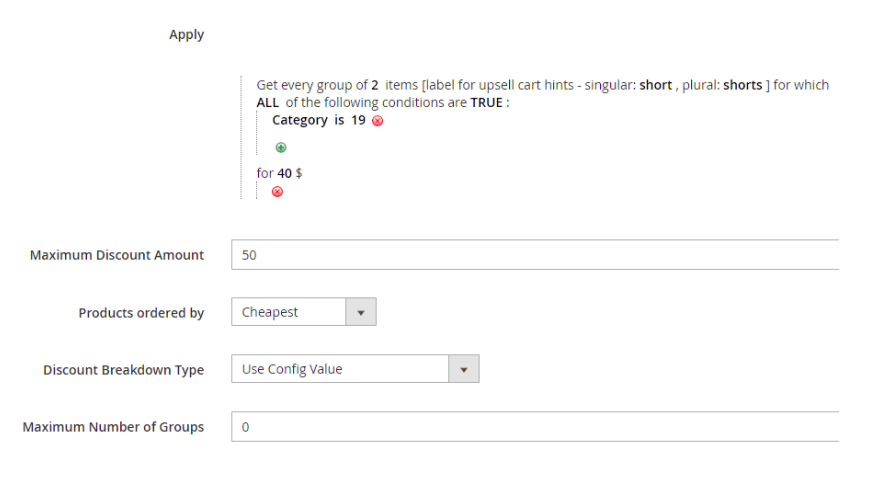
The rule in this example is – “Get 2 shorts for 40$”. Maximum discount amount is 50$.
Note: In our example, short is any product that belongs to category 19.
Cart examples for this rule:
- Customer has 1 short (30$) and 1 short (15$) in cart. The discount amount is 5$. (Because the customer paid 40$ instead of 45$)
- Customer has 2 shorts (30$ each), 1 shorts (40$ each) and 1 short (50$). The discount amount is 20$. (Because the customer paid 40$ instead of 60$. Also, since the “Maximum Discount Amount” is 50$, the rule hasn’t been applied on the next two T-shirts, because then the discount amount would exceed 50$).
Upsell cart hints example for this rule:
- Customer has 2 shorts in cart. The upsell cart hint is “You've got a set of 2 shorts, for $40 only. Add 2 more shorts, to get your next set for $40 only!”
